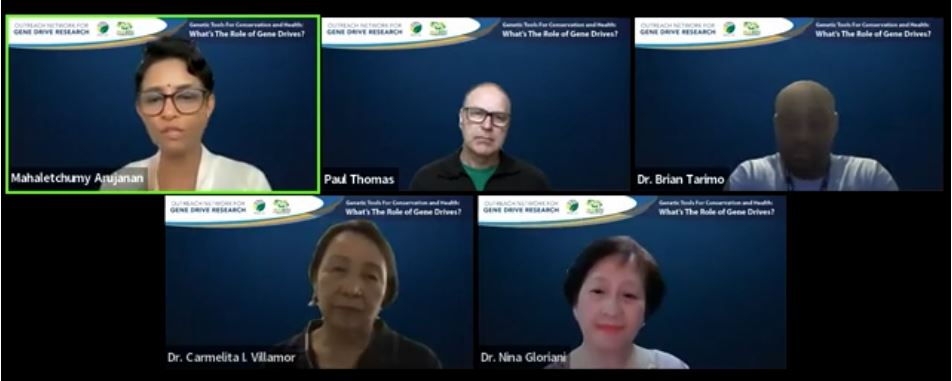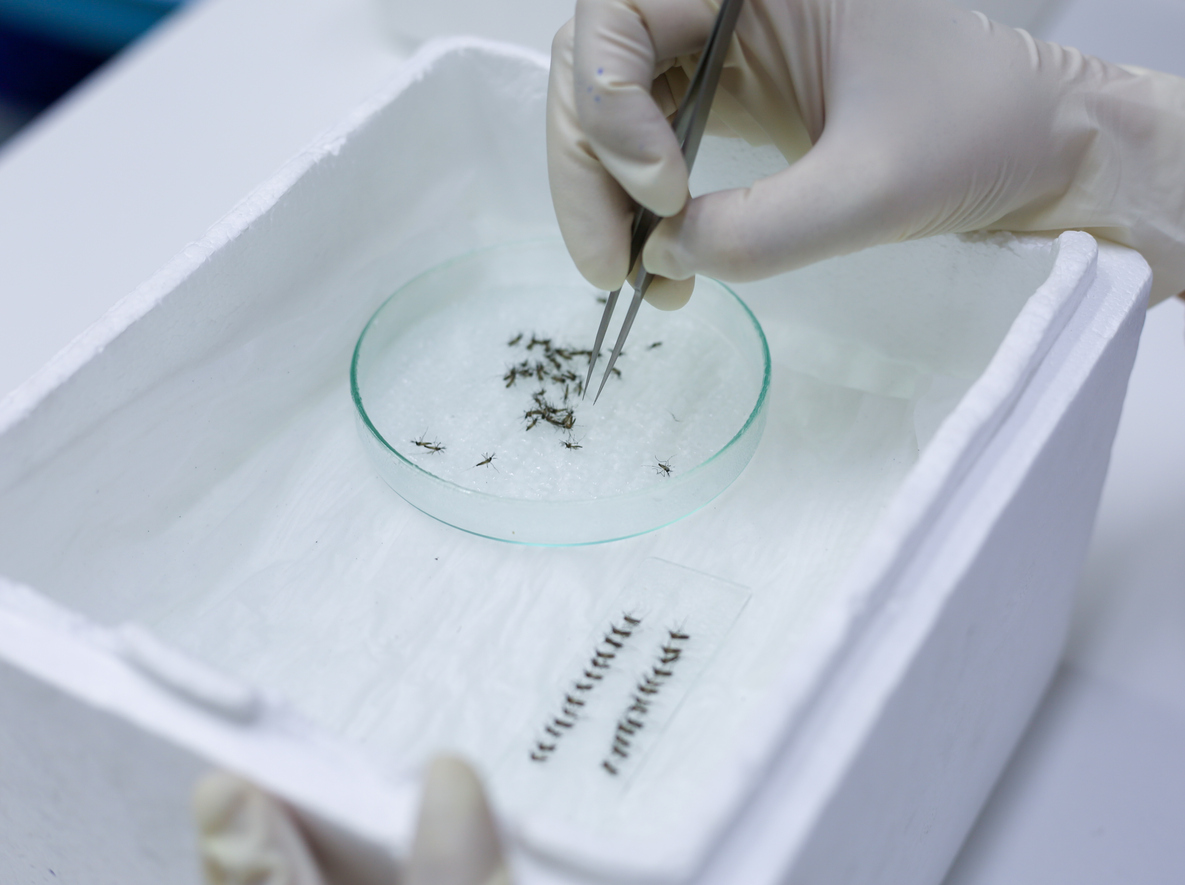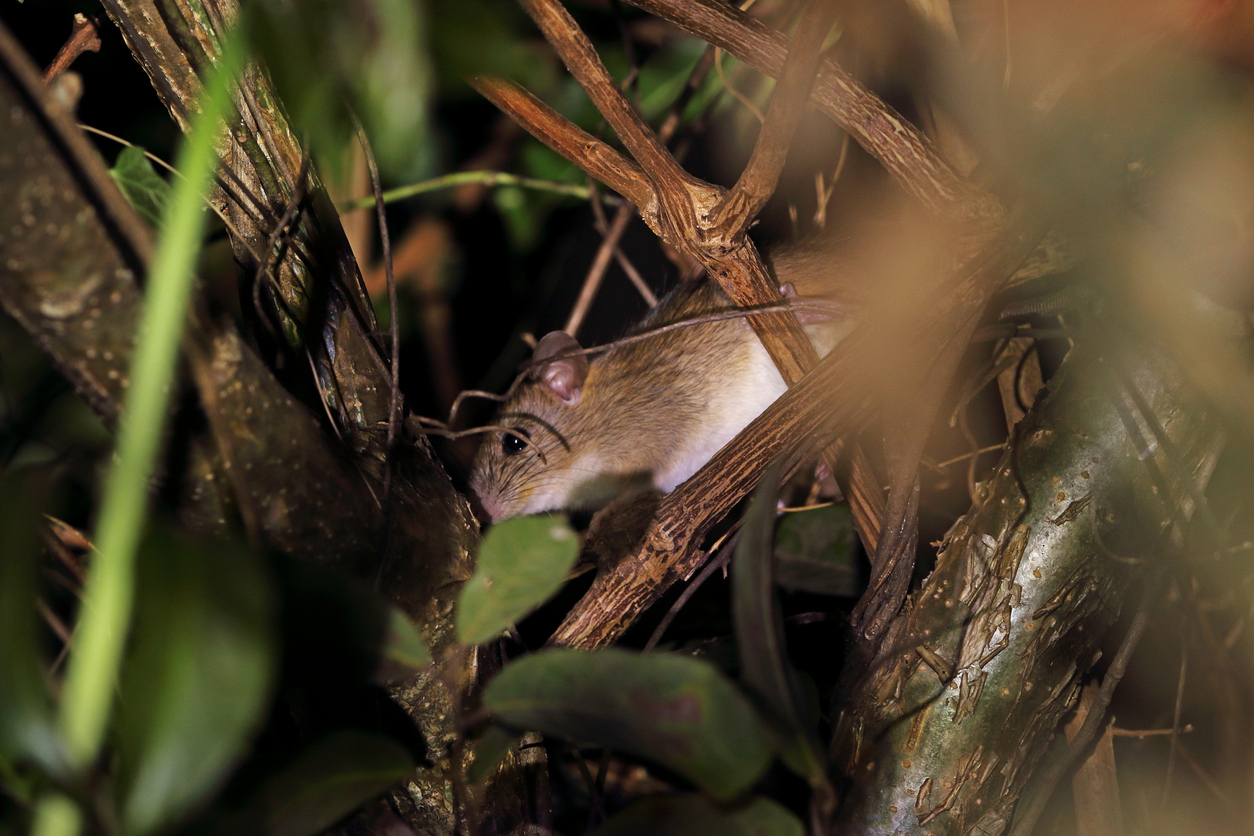Can Gene Drive Address Health and Conservation Challenges in the Philippines?
| |
ISAAA Inc., in partnership with the Outreach Network for Gene Drive Research and the Malaysian Biotechnology Information Centre (MABIC), gathered approximately 834 online participants during the webinar Genetic Tools for Conservation and Health: What's the Role of Gene Drives? held on November 16, 2023, via Zoom and livestreamed on Facebook and YouTube.
The online session is the first of the 2023 Gene Drive Webinar Series that focuses on the interests of specific countries and aims to promote a productive and balanced conversation on the benefits and risks of possible gene drive applications relevant to national priorities. The Philippines has been picked as the first country to be engaged in the webinar series. The Philippines has been at the forefront of biotechnology research and regulation in Asia for a long time and plays an important role in shaping the region’s views on novel technologies and developing expertise.

A panel of experts tackled the potential of gene drive technology to address pressing health and conservation challenges in the Philippines and other countries.
The Philippine Situation: Concerns on Health and Invasive Species
Dr. Nina Gloriani, a Clinical Microbiology Consultant at St. Luke's Medical Center in Manila, highlighted the country's struggle with infectious diseases, particularly dengue fever and malaria. Gene drive technology, she suggested, could be used to control mosquito populations, the primary vectors of these diseases. She emphasized the potential of bacterial gene drives in addressing the country’s problem with anti-microbial resistance.
Dr. Gloriani raised her concern about the reluctance of Filipino researchers to conduct GM mosquito studies in the past. She said that there’s a need to convince them about the benefits of gene drives before they conduct such studies.

Dr. Carmelita Villamor, a former Chief Science Research Specialist at the Ecosystems Research and Development Bureau (ERDB), addressed the issue of invasive alien species in the Philippines, emphasizing the damage they cause to native ecosystems and agriculture. Gene drive, she proposed, could be employed to reduce or even eradicate these harmful species.
Dr. Villamor said that applications for gene drive research and adoption in the Philippines will be handled by the Biosafety Committee, the same group of agencies that handle the assessment of GMOs.
Gene Drive Solutions: Addressing Vector-Borne Diseases and Fighting Biodiversity Loss
Dr. Brian Tarimo, a Senior Research Specialist at Ifakara Health Institute in Tanzania, provided an overview of gene drive technology, explaining its principles and potential applications. He discussed its current use in vector control efforts, such as suppressing mosquito populations.
There is little evidence that Anopheles mosquitoes are beneficial to the ecosystem. A study showed that their larvae serve as food to a fish species, but this fish also feeds on other organisms. Thus, eradicating them would not be harmful to the environment. Furthermore, the goal of gene drives is to suppress (not eradicate) the population so the mosquitoes would not be able to transmit disease.
Prof. Paul Thomas, Genome Editing Program Director at The University of Adelaide, elaborated on the potential of gene drive to control rodent populations, which are responsible for environmental damage, loss of biodiversity, and devastation of bird nesting sites. Current methods to suppress them are expensive and population-limited.

Invasive species, such as rodents, are good models to test the gene drive technology because of the following reasons: there is available knowledge about their genomes, they reproduce quickly, they can be propagated in the laboratory, they cause harm to the environment and the agricultural sector, and other tools to eradicate them are costly and time-consuming.
Various gene drive techniques can be employed for rodent suppression; however, without stakeholder and regulator engagement, the deployment of such techniques would not be a success.
To know more about the role of gene drives in conservation and health, visit ISAAA Webinars.
| Newer Post | Archive | Older Post |
Science Speaks is ISAAA Inc.'s official blog. Weekly blog articles, authored by ISAAA writers, partners, and invited contributors, aim to help share, disseminate, and promote scientific knowledge and its vital role in achieving global agricultural sustainability and development. Your support to Science Speaks will help us achieve this goal. You can help us by donating as little as $10.

